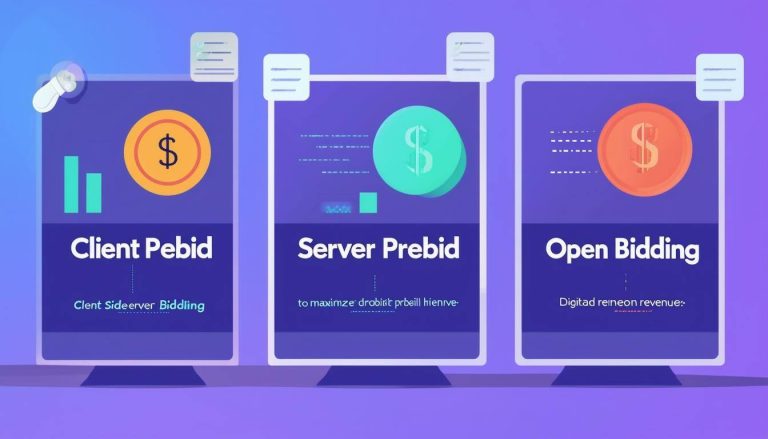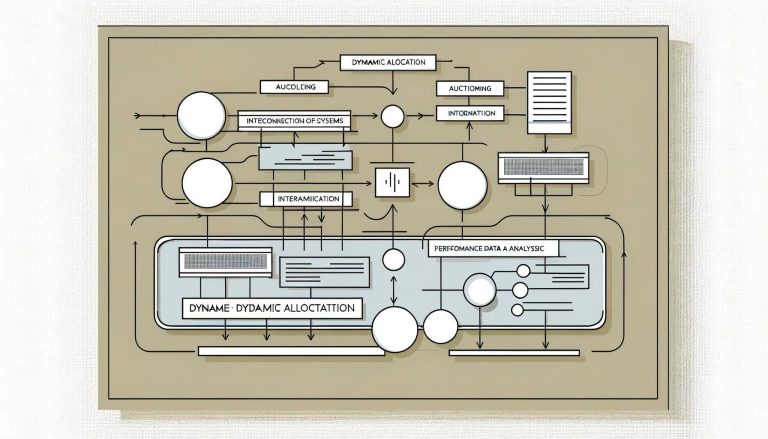Common Programmatic Terms | Google Ad Exchange (AdX, AdEx or AdSense) – Advally
Whether you’re trying to brush up on your Agency bingo game or just survive yet another meeting from a New Ad Tech …
March 13th, 2025
Whether you’re trying to brush up on your Agency bingo game or just survive yet another meeting from a New Ad Tech vendor, we tried to compile a list of common Advertising terms that you or your sales people can reference at any time!
Ad Exchange
Like a stock exchange, an ad exchange is a digital marketplace that enables advertisers and publishers to buy and sell advertising space, often through real-time auctions, directly to one another. They’re most often used to sell display, video and mobile ad inventory. Think of a big pool of unsold impressions that publishers make available and advertisers purchase, without going through a third party ad network.
Google Ad Exchange (AdX, AdEx or AdSense)
Google is the cornerstone of internet display Advertising, and they have the largest Advertising Exchange on the internet. Though there are many Ad Exchanges, Google’s Ad Exchange is the dominant force commanding roughly 65% of the marketplace. Google has multiple products that can list advertising inventory on tier exchange.
Ad Network
An Ad Network is a company that aggregates inventory from sites they do not own and sells it in the direct advertising market.
Adhesion Unit
The adhesion unit (or mobile adhesion unit) is an ad that adheres to the bottom of the mobile screen. If you scroll up or down, the adhesion unit remains in place if/until the close button on the top right is clicked.
ATD (Agency Trading Desk – see DSP & Programmatic Ad Buying)
ATD’s are DSPs specifically run by or spun out of major ad agencies on behalf of their clients. ATDs generally share data between clients and exist to allow agencies to provide programmatic ad buying opportunities for their clients as well as to allow publishers to connect to large advertisers via the advertising agency. By connecting publishers with big brands in this fashion, agencies maintain their “middle man” role in the advertising relationship and provide convenient channels for publishers to gain non-endemic revenue as well as more advertising options for their clients.
Below The Fold
Borrowed from newspaper advertising terms. In newspaper terms, it is the area of a newspaper page that is beneath the folded part and must be opened completely or flipped over to be seen. In digital terms, anything that you have to scroll down to see after the initial page load is considered “below the fold.”
Billboard Ad Unit
This is a 970×250 pixel Advertising Unit. The sizie of the unit is fixed, but it can contain many different types of Rich Media Creative if needed.
CPA (Cost-Per-Action)
When an Advertiser offers to pay you for an action taken on their site. This could be a click, a registration, or an e-commerce sale.
CPC (Cost Per Click)
Advertisers pay a certain amount per click on their Ad.
CPM (Cost Per Thousand)
Technically “Cost Per Mille” – “mille” means thousand in Latin. CPM is a cost of advertising that is based on impressions priced in 1000 increments. An $8 CPM means that an advertiser pays $8 for every 1000 impressions that are delivered.
CTR (Click-Through Rate)
The percentage of impressions delivered that were clicked on by a user. This metric varies wildly based on how enticing the advertising creative is to click on. Google’s Text Search results are the most successful CTR ads of all time.
Conversion
A Conversion occurs when the user performs the specific and measurable action that the advertiser has defined as the campaign goal. It could be a sale, a registration or any other parameter that the Advertiser defines.
Demographic Targeting (see Audience Targeting)
A type of Audience Targeting that is based on a user’s demographic (age, gender, HHI).
DV360 (Display and Video 360 from Google)
The advertiser interface into the Google ad network. If you buy ads on Google, you do it through DV360.
GAM (Google Ad Manager)
GAM is the system that many publishers and websites use to book and serve many of their ad units. It has a vast amount of market penetration for Display Advertising and there currently very few competitors that come close to the functionality offered in GAM.
DMA (Designated Market Area, see Geographic Targeting)
A region of the country in which radio and television stations in the major city of the area are seen in homes and households. Typically advertisers prefer to geotarget a DMA rather than a specific city.
DSP (Demand-Side Platform, see Programmatic Ad Buying, Agency Trading Desk) A DSP is a system or technology that advertisers utilize in order to purchase digital media programmatically. The advantage for advertisers in purchasing media this way is that it can save time and money without haggling sales reps and signing pieces of paper. Large ad agencies run their own DSPs (called Agency Trading Desks or ATDs) on behalf of big clients.
Geographic (Geo) Targeting (see Audience Targeting)
A type of Audience Targeting that is based on a user’s current location. Ads are capable of geotargeting to zip code, city, DMA, state, and/or country. The location is determined by a user’s unique device IP address, and is less accurate the more narrow the geotarget. IP addresses that cannot be confirmed as located within a specific area are not included, even if the user is physically there.
Impression
A single display of online content to a user’s web-enabled device. Many websites sell advertising space by the number of impressions displayed to users. An online advertisement impression is a single appearance of an advertisement on a web page. Each time an advertisement loads onto a user’s screen, the ad server may count that loading as one impression.
In-Banner Video Ad Unit
A video advertisement that runs inside of a standard ad unit. They are most often executed with Rich Media ad units.
OutStream Video Ad Unit
This is a video ad that plays in an advertising unit outside of a stream of video. It can play anywhere on the page.
In-Stream Video Ad Unit
A video advertisement that is played before, during, or after videos being watched by the audience.
IAB (Interactive Advertising Bureau)
IAB is a non-profit trade association devoted exclusively to maximizing the use and effectiveness of interactive advertising and marketing. IAB maintains a list of the most commonly used and accepted types of ad units, typically referred to as “IAB Standard”. Publishers and advertisers commonly refer to IAB as resource for industry standards in digital media. IAB or IAB’s are often slang for Display Ads.
Interstitial Ad Units
Ads that appear between two content pages (after the click but before the page loads). Also known as transition ads, transitionals, intermercial ads or splash pages.
KPI (Key Performance Indicator)
KPIs are a fancy way of basically saying “goals” or “benchmarks.” An advertiser KPI is usually something that is tangible (generate $50,000 in sales, get 500 conversions, etc) but they can also be less tangible (brand awareness, reach males 18-34, etc). It is crucial to understand advertiser KPIs, as this is the single metric they are measuring performance on.
Leaderboard
Name for a short, wide, horizontal ad unit measuring 728×90 pixels.
LREC (Large Rectangle, see MREC)
LRECs (336×280 pixels) have fallen out of use and have been replaced on most sites by the standard 300×250 pixel unit (MREC). However, many people who became accustomed to referring to LRECs simply started calling the 300×250 units by that name instead of its proper “MREC” name. Both terms are now considered interchangeable and refer to a 300×250 unit.
MREC (Medium Rectangle, see LREC)
Name for a rectangular box-shaped ad unit measuring 300×250 pixels. Is sometimes also called an “LREC” but both terms refer to a 300×250 unit.
Native Advertising
Strictly speaking, native advertising is client-created content that is clearly labeled as being client produced, and is placed within the content stream of a partner website. In a broader sense, native advertising tends to refer to any type of client integration within the editorial channels of a brand. Because it is common to use this phrase for a multitude of different client-content integrations, it is important to be clear and specific when using the phrase.
Open Auction
A public Real Time Bidding (RTB) auction in which any buyer or seller can
Participate. Open Auctions typically take place inside of Ad Exchanges.
Pre-roll Ad Unit (see In-Stream Video Ad Unit)
An In-Stream Video Ad Unit that runs before video content. The most common type of pre-roll is 15 seconds long. The typical way to run this is that any pre-roll ad unit that is longer than 15 seconds has a mandatory “skip” button after 5 seconds has passed.
Programmatic Ad Buying
A term used for media buying via an online platform that automates key functions of invoicing, metrics, asset management. In this, an advertiser plugs in directly to the publisher’s system to create an order. They skip interaction with a rep, ad ops, or project manager.
Programmatic Guaranteed (PG)
Buying and selling on a non auction model, media
much like a direct IO, but served through programmatic pipes.
Private Marketplace (PMP)
An invite only marketplace where inventory is made
available to a select buyer (or group of buyers) on an auction based model.
Pushdown Unit (see IAB Rising Star)
Ad unit that is served at the top of the page (same place as a billboard) in a retracted, 90 pixel high setting. Upon user action (usually a click) the unit expands to 415 pixels, and pushes the content on the page down.
RON (Run-of-Network)
A term that describes where an ad is scheduled to run. Ads that are scheduled to run on all network sites without discrimination are defined as RON.
ROS (Run-of-Site)
A term that describes where an ad is scheduled to run. Ads that are scheduled to run on a site without discrimination (on all available pages on that site) are defined as ROS.
Pre-Roll (see In-Stream Video Ad Unit)
An In-Stream Video Ad Unit that runs directly before a piece of video content, within in the video player. Most pre-roll units are 15 seconds in length.
RTB (Real-Time Bidding, see Programmatic Ad Buying)
The functional name for the process of automated bidding and fulfillment of ad inventory often referred to as auction or marketplace bidding. An advertiser defines the type of user that they want to reach and then places a bid on how much they are willing to pay for those impressions. As impressions become available, their advertising criteria and the bid is automatically evaluated and if the impression is eligible, their ad is served. This process can be done through a private exchange (typically ad agencies will connect their brands with publisher networks in a closed bidding environment) or on an open exchange (publisher networks allow anybody to bid on their inventory).
Retargeting (see Audience Extension)
The use of a pixel tag or other code to enable a third-party to recognize particular users outside of the domain from which the activity was collected.
Rich Media Ad Units
Ad units that users can interact with in one fashion or another (by rolling over to expand, by clicking to play a sound or video, etc). These allow a greater ad experience by storing the additional assets on a 3rd party ad server that load when the viewer clicks on the ad. i.e., play video, expand ad.
Sell-Through Rate
The percentage of ad inventory that is sold via programmatic or direct channels.
Skyscraper
Name for a tall, thin, vertical ad unit measuring 160×600 pixels.
SOV (Share of Voice)
The percentage of total inventory of a specific ad unit that is allocated towards an advertiser. A 10% SOV means that the advertiser will own 10% of all possible opportunities and that their ad will be loaded 1 out of every 10 possible times on average. The lower the SOV, the less frequently an ad will be served; and the higher the SOV, the more frequently an ad will be served. 100% SOV ads can also be called Sponsorships or Fixed ads.
SSP (Sell or Supply-Side Platform, see Programmatic Ad Buying)
An SSP is a system or technology (that you log in and use) that publishers set up in order to make their inventory available via programmatic ad buying. Currently TEN uses Google and Rubicon as its SSP platforms.
Standard Media (or Standard IAB Media, see IAB)
The most common types of ad units used, currently: 300×250, 728×90, 160×600, and increasingly 300×600. Ad sizes that are not in that group are generally considered “non-standard.” Exceptions and new definitions develop over time as new ad sizes become standardized and old sizes fall out of use.
Viewability
Viewability is a measure of whether or not an ad had a chance to be seen by a user. It gives marketers the base knowledge that their message was seen by a customer, and in digital, the actual number of times it appeared in front of users. Currently the IAB and MRC definition of viewability for display advertising is a minimum of 50 percent of the ad is in view for a minimum of 1 second.
Programmatic advertising got you stumped? You have questions or just looking to make some extra revenue? We can help! Please email us at [email protected] for your questions or inquiries.
Related Blogs

Why Choose one type of Bidding when you can have them all?
March 13th, 2025 by Doug Bishop
Explore how digital publishers can significantly enhance their revenue streams by integrating Client Side Prebid, …
Read More
How Header Bidding changed the Ad Game forever.
March 15th, 2025 by Doug Bishop
The advertising industry has always been a dynamic and rapidly evolving space. With the rise of programmatic …
Read More
Understanding Dynamic Allocation in Google Ad Manager
February 26th, 2025 by Doug Bishop
Dynamic Allocation is a key feature in Google Ad Manager (GAM) that plays a crucial role in maximizing ad revenue for …
Read More